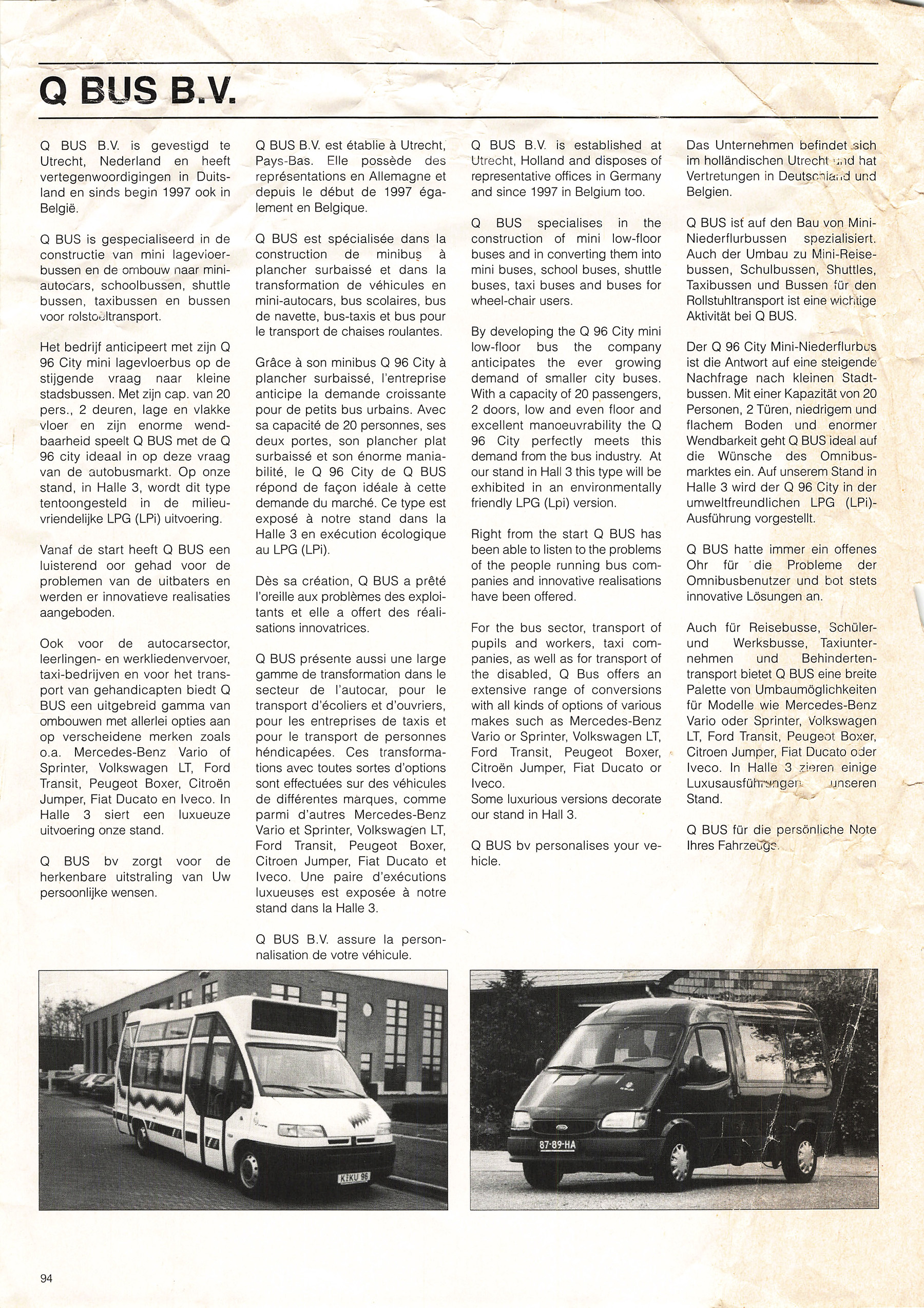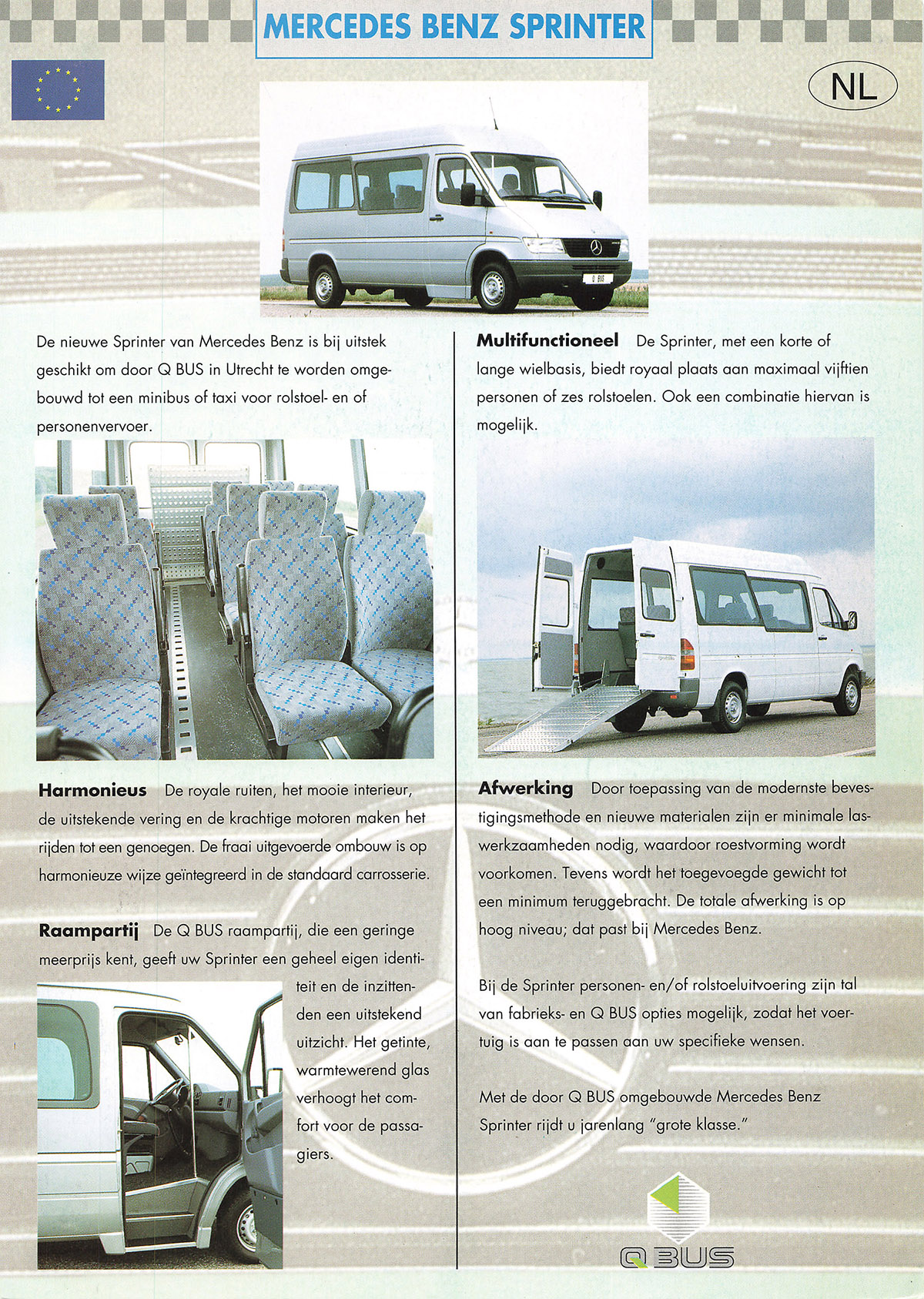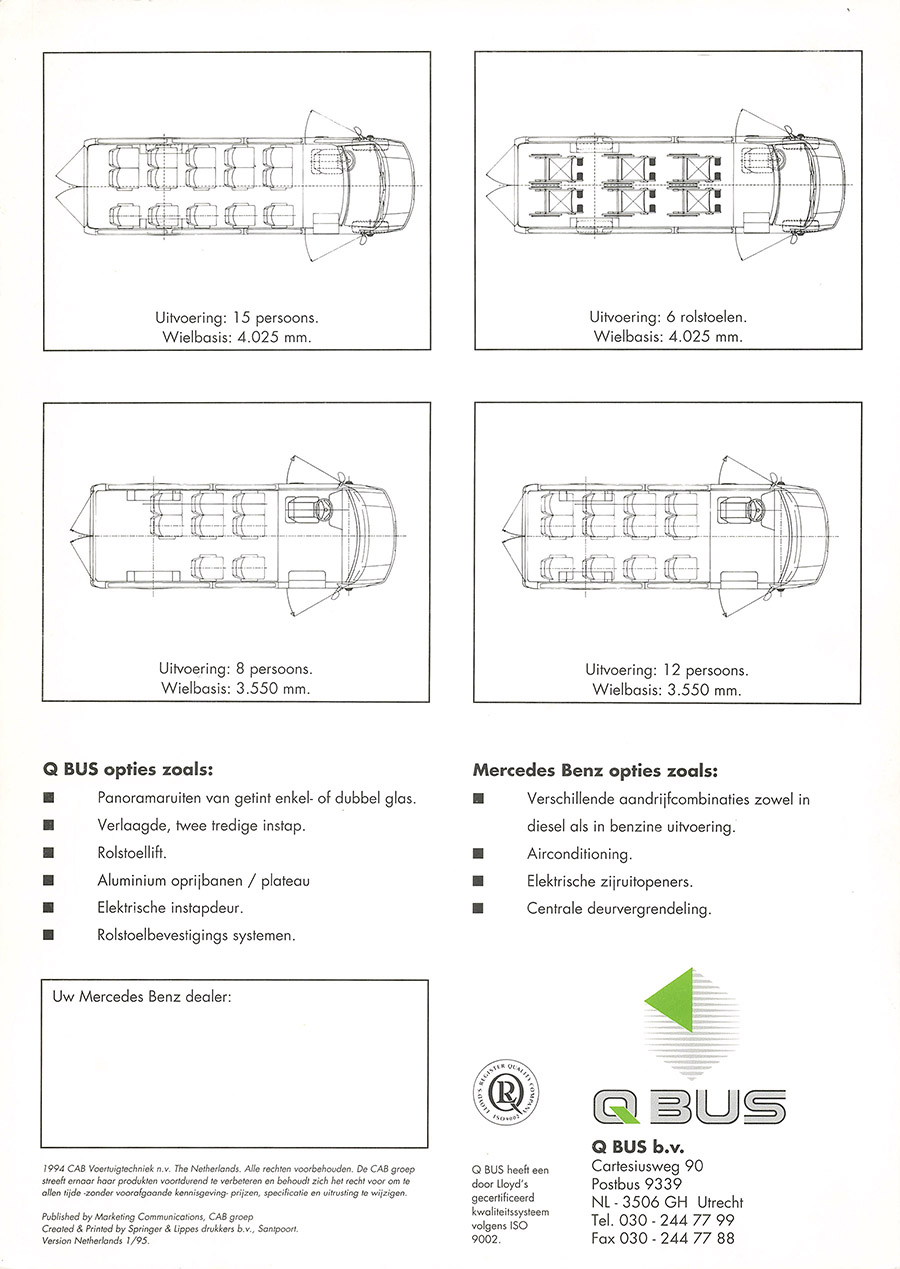NLD-Q-Bus
Netherlands - UtrechtObservations successor to CAB, continued as Tribus
General information
CAB (Centraal Autoherstel Bedrijf) was the central workshop in Utrecht of the public transport companies that originally belonged to Netherlands Railways and later to the umbrella organisation of the companies (ESO, later VSN). With the reorganisation of bus transport in the Netherlands, the role of the CAB as a central workshop also disappeared. In 1993, the department for adapting minibuses became independent as Q-bus BV. This company continued with the adaptation of neighbourhood buses, some of which were also exported, for example to the MIVB in Brussels, which ordered three buses. But Q-bus had more ambitions and also developed its own model of low-floor midibus, the City ’96, based on the Peugeot Boxer. Three buses of this striking model were delivered to Westnederland in early 1997, the 6383 with VIN XL93700D0CB240003, the 6384 with VIN XL93700D0CB240004 and the 6385 with VIN XL93700D0CB240005. A demo bus with VIN XL93700D0CB240009 ended up at the TEC in Belgium. The XL93700D0CB240006/08/10/13/14 and 15 also ended up at TEC.
Despite its appealing appearance, the City ’96 was not an immediate success. Perhaps the time was not right for it, because this type of midibus with a low floor is now in general use.
After a forced restructuring of the company in 1998 some employees tried a restart. However, this was not possible and they created a new company, Tribus.
Production of the City ’96 was continued by Omninova in Sweden, who called it the MultiRider, with a later, larger version called the Maxirider. The first four vehicles sold as Omninova still hadd Q-Bus VINs ..16 to …19.



